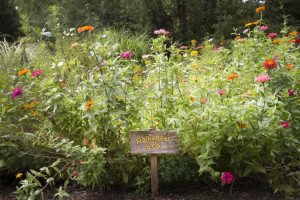How to Create a Bee and Pollinator Friendly Garden
Bring Pollinators to the Garden
Are you wondering, “How to create a bee and pollinator-friendly garden?”
Great News! What you plant in your garden can help the bees and pollinators.
We need to change our thinking from defense to offense, as our honey bee and other pollinator populations continue to decline to alarmingly low numbers. Without our bees and pollinators, we wouldn’t have most of the food we eat. Did you know one bite of every three we take was dependent on a bee for pollination?
What caused the bee decline?
- Mites cause multiple viruses and other diseases in beehives.
- Lack of nutrition with a limited supply of good pollen and nectar sources
- Lack of natural habitat reason etc.
- Extreme weather conditions
- Improper management of beehives, lack of beehives/beekeepers, bee genetics
- Exposure to insecticides due mostly due to human error and lack of responsibility ( Not reading and following labels, etc.)
Bottom line: The bee decline is a very complicated situation and does not have a significant reason; its several reasons.
What can you do to help the Bee and Pollinators?
Although backyard gardeners can’t do anything about the mites, viruses, and diseases, they can do more to help increase the number of honey bees, native bees, and other pollinators by planting a bee and pollinator-friendly garden.
How to Create A Bee and Pollinator-Friendly Garden
- Provide a water source.
- Plant nectar-rich plants in your garden.
- Create bee areas that are wind protected and get full sun.
- Plan your garden, so it flowers throughout the year.
- Allow field edges to grow ‘wild.’ Many weeds are an excellent source of nectar and pollen especially dandelions and clovers.
- Fill your garden with both native and non-native nectar and pollen sources.
What are some Pollinator and Bee Friendly Plants available in Cincinnati?
Flowers with a variety of colors will attract a diverse array of bees. The bee’s favorite plants come in shades of blue, purple, violet, white and yellow are best.
Here are some bee favorites: lavender, milkweed, daisies, coreopsis, crocus, alliums, chives, catmint, salvia, sage, gayfeather, Penstemon digitalis, sedum, goldenrod, lambs ears, thyme, and zinnias. Take a look at Natorp’s Pollinator-Friendly Plant Collection!
They also enjoy flowering shrubs, perennials, annuals, vegetables, and herbs are excellent sources of nectar and pollen.
Plant Trees for the Bees
Plant trees and shrubs like the Crabapple, Peach Tree, Apple Trees, Hawthorn, Flowering Cherry, Spirea, Butterfly plant, and the Caropyteris.)
Protect Swarms
If a swarm of honeybees happens to visit your yard and garden, don’t panic! They’re usually not aggressive. Give them time to move on, or call your local Extension Office or local beekeepers that will gladly come and remove the hive safely and transport to a new location.
Reduce the Use of Insecticides
- When needed, use them wisely, and practice Integrated Pest (Pollinator) Management (IPM). Hosing off bad bugs, knocking them off into a bucket of soapy water, using grow covers, handpicking, etc
- If you must spray, use targeted pesticides that won’t affect bees.
- Spray when the bees are least active and the wind is not blowing.
- Never spray when crops are in flower. Specifically, flowering plants that attract bees.
- Only treat plants that desperately need it.
- Apply Insecticidal Soap or Horticultural Oil before getting out of the stronger insecticides. Note: Insecticides will vary in their effect on bees. Dust and wettable powders are more hazardous to bees than solutions, granular, or emulsifiable concentrates. Systemics are a safer way to control many harmful pests without sprays, but ‘may’ contaminate nectar or pollen. Never apply when a plant is in flower. Read the label and always follow the directions. Many insecticides, like Sevin or Spinosad (an organic spray), may be very low in toxicity to humans and pets, yet are incredibly toxic to bee pollination.
- Remember that bees forage 3+ square miles, and it is not just insecticides that may affect bees – fungicides, defoliants, desiccants, miticides, or combinations of these could as well!
Install Bee Nesting Boxes
Install bee nesting boxes and allow space along the edge of your garden to encourage the native bee populations. The solitary bee species that nest in boxes, hollow stems, and the ground won’t swarm and don’t sting. These are excellent pollinators and are already in your yards and gardens. By installing their nesting boxes, you help increase their populations. 250 Mason (orchard) bees can pollinate 1 acre of an orchard!
Learn More About Bees
Take the time to learn more about not only honey bees, but our native bees. Educate your kids about the importance of the bee population. Make sure they understand how to watch for and avoid bees. Only female honey bees can sting, and it is genuinely is used as a defense mechanism only.
A Great Pollinator Resource
Check with the local Extension and local beekeeper associations for beekeeping classes and workshops.
As gardeners, we can do our part and grow Cincinnati’s pollinator population.
Cincinnati Gardening Made Easy! Have a question? Ask the Experts!